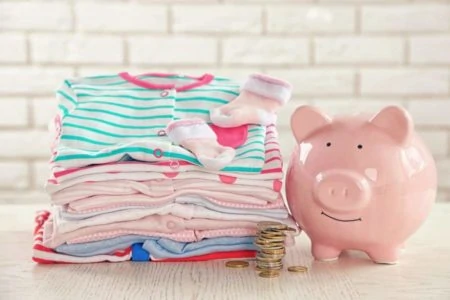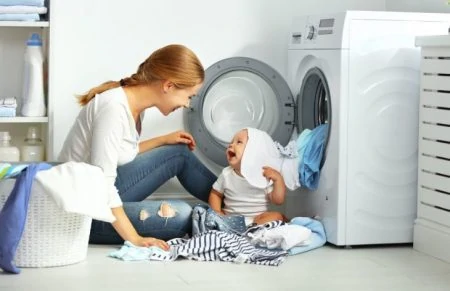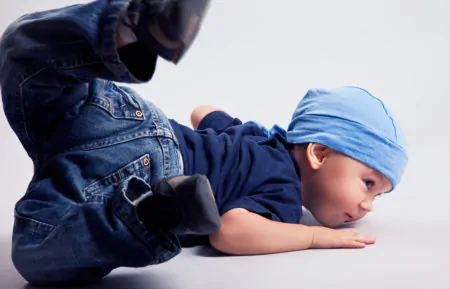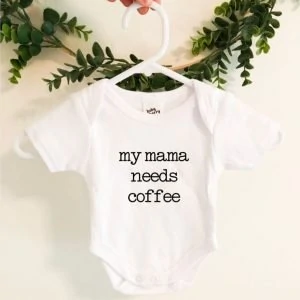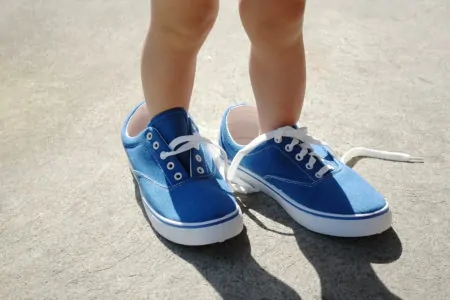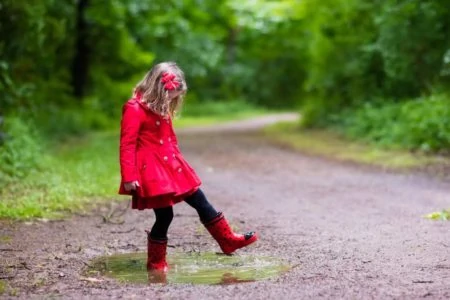You likely have a pile of cash hiding in your baby’s closet. Don’t run off to check just yet, but hear me out.
Most parents think about selling outgrown clothes but get discouraged. They assume it takes too much effort, especially with a toddler underfoot. While it does take some work, the effort is minimal compared to the payoff. We have done this for years and are always pleasantly surprised by the extra money we make selling those tiny threads.
We will help you avoid rookie mistakes and give you step-by-step instructions for the best online and offline platforms. Read on to learn how to turn those outgrown onesies into big dollars.
Key Takeaways
- Sort clothing into three piles: sell, donate, or recycle based on condition.
- Wash and organize sellable items by size and season to maximize appeal.
- Select the right platform, such as Poshmark, Mercari, or local consignment shops.
- Balance your potential earnings against the time required to list and ship items.
Preparing Your Inventory
First, you must clean out that baby closet and gather every item that no longer fits. Depending on the size of your child’s clothing stash, this could take twenty minutes or an entire afternoon. We suggest waiting until naptime so you can focus.
Once you have gathered the inventory, you are ready to sort.
1. Sort by Condition
By now, you likely have a mountain of fabric on your living room floor. Grab your bins; you will need them. (If you lack storage containers, Amazon has plenty of options.)
Inspect every single item for stains, holes, and pilling. Be critical here because not every piece is worth selling.
Excellent Condition (Sell)
These are your money makers. To qualify, clothes must be free of stains, holes, or fading. They should look almost new.
Current styles from the last 3 to 5 years sell best. High-quality brands like BabyGap, Zara, Boden, and boutique labels usually fetch higher prices than budget brands like Garanimals. Set these aside for your “Sell” pile.
Decent Condition (Donate)
These items look okay but aren’t perfect. Maybe the wash wear is visible, or there is a tiny snag near a button. They are perfectly functional but won’t pass the strict standards of a buyer or consignment shop.
These make excellent hand-me-downs for friends or tax-deductible donations to local shelters and thrift stores.
Poor Condition (Recycle)
Diaper blowouts and spit-up happen. White onesies take the brunt of this damage. If an item has permanent stains or tears, do not try to sell or donate it.
Instead, cut them up for cleaning rags or use them for craft projects. Some textile recycling centers will also accept these scraps.
You can also look for a Planet Aid bin for donating textiles. They’ll find ways to reuse or repurpose the clothing, improving the environment by reducing greenhouse gases.
Editor's Note:
Katelyn Holt RN, BSN, BC2. Organize by Size and Season
Now that you have your “Sell” pile, you need to get organized.
- Size: Group all items by their tag size. If you sell online or at yard sales, selling in “lots” (bundles of same-size clothes) saves time.
- Season: Separate winter coats from summer rompers. Consignment shops usually only buy for the upcoming season, so this step is vital.
3. Wash and Refresh
Presentation is everything. Ensure your items are clean and wrinkle-free. Even if they were clean when stored, they might smell musty after sitting in a bin for six months.
Buyers and shops will reject clothes that smell like mildew, pets, or strong perfume. Wash everything with a fragrance-free laundry detergent and fold them immediately to prevent wrinkles.
Where to Sell Used Baby Clothes
You have two main paths: online platforms or local physical locations. Each has pros and cons regarding effort and payout.
1. Online Marketplaces
Selling online opens your inventory to the whole country. While you often get a better price, you also have to handle photography, listing, and shipping.
Poshmark
Poshmark is a social marketplace. You create a “closet,” upload photos from your phone, and set your price. It is excellent for selling trendy brands or bundling multiple items to save the buyer on shipping.
Pros
- Very user-friendly app.
- Buyer pays for shipping (flat rate).
- Great for selling bundles.
Cons
- Poshmark takes a 20% commission on sales over $15.
- You must store inventory until it sells.
- Requires active sharing to get visibility.
Mercari
Mercari is similar to Poshmark but often attracts a wider range of buyers looking for everyday items, not just designer labels. Listing is fast, and their selling fees have historically been competitive. It is a great place to clear out mid-range brands like Carter’s or Old Navy.
Pros
- Flexible shipping options.
- Items often sell quickly.
- Lower pressure to “share” or be social.
Cons
- Buyers can make lowball offers.
- You must handle your own shipping logistics (weighing items).
ThredUP
ThredUP is an online consignment store. You request a “Clean Out Kit,” fill it with clothes, and mail it back. They do the work of photographing and listing. It is the easiest method but offers the lowest payout.
Pros
- Zero effort; just fill a bag and ship.
- No need to photograph or store items.
- Great for clearing clutter fast.
Cons
- Payouts are very low compared to selling it yourself.
- They may reject items you thought were good.
- Processing times can be slow.
Kidizen
Kidizen is a marketplace specifically for kid’s fashion. The community is comprised of moms who know the brands well. It is ideal for boutique brands (like Mini Boden or Kickee Pants) and allows you to set up your own shop policies.
2. Local Consignment Shops
If you want cash today and don’t want to deal with shipping, local shops are your best bet. Stores like Once Upon a Child, Kid to Kid, and Children’s Orchard buy items directly from you.
How it works:
- Upfront Payment: A buyer reviews your bin and makes a cash offer for the items they want. You leave with money the same day.
- Strict Selection: They usually check for recalls, stains, and style currency. They may reject a lot of your items.
- Store Credit Bonus: Most shops offer a higher value if you accept store credit instead of cash. This is a hack if you need to buy the next size up for your child.
3. Yard Sales
If you have a massive amount of stuff, including gear and toys, a yard sale is efficient. You can also look for community consignment events (like “Just Between Friends”), which are huge pop-up sales held at fairgrounds or community centers.
Yard Sale Tips
- Group by Size: Place all 6-9M clothes on one table or in one clearly marked box.
- Price to Sell: Yard sale shoppers want bargains. Price items at $1 or $2 unless it is a coat or a set.
- Merchandise It: Hang up nice dresses or jackets. Snap the onesies. If it looks cared for, it sells faster.
4. Social Media
Facebook Marketplace and local “Buy/Sell/Trade” groups are powerful tools. This method combines the higher prices of online sales with the “no shipping” benefit of local sales.
Tips for Social Selling:
- Sell in Bundles: Instead of listing one shirt for $3, list “Lot of 5 Summer Shirts, Size 2T” for $15. It makes the pickup worth the buyer’s time.
- Be Safe: Always meet in a public place, like a police station parking lot or a busy grocery store, for the exchange.
- Porch Pickup: For cheap items, many parents do “Porch Pickup” (PPU), where the buyer leaves cash under the mat and grabs the bag from your porch.
Selling Baby Clothes FAQs
Save or Sell?
In your mad dash to declutter, don’t forget to keep a few sentimental favorites. You will cherish that “coming home” outfit or those tiny first shoes when your child is older.
Also, consider your future plans. If you hope to have another baby, keeping gender-neutral basics (like sleep sacks and white bodysuits) saves you money later.
Ultimately, selling baby clothes should be helpful, not stressful. If listing items online feels overwhelming, take the easy route with a consignment store or donation bin. Your sanity is worth more than a few extra dollars.
